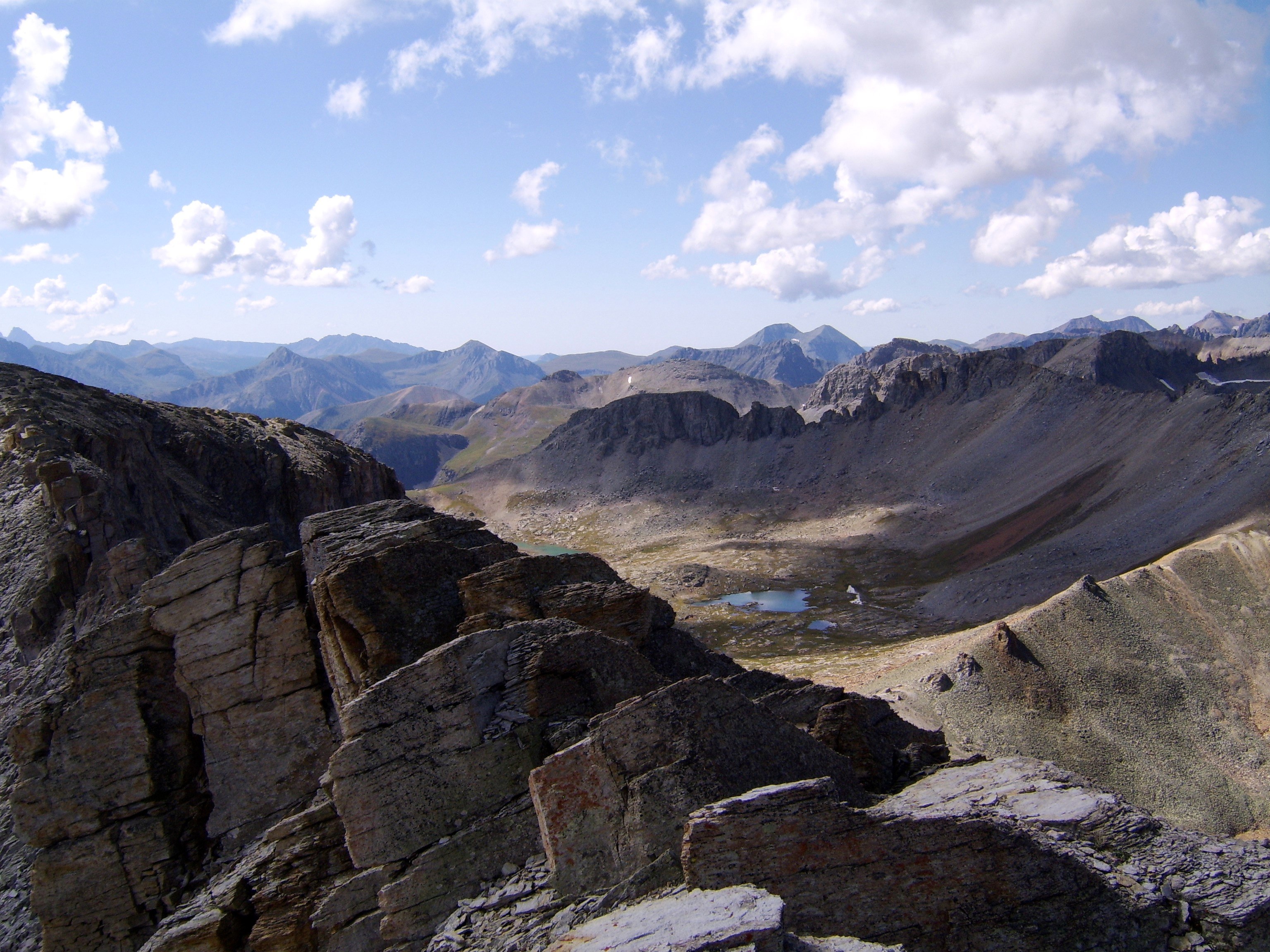LoJ: #271 (Pre-LiDAR #269) / 13,484' T 10
Range ›
San Juan Range
Quadrangle ›
Ironton
Summit Location ›
 N 37° 53' 51.94", W 107° 44' 56.71"
(Not Field Checked)
N 37° 53' 51.94", W 107° 44' 56.71"
(Not Field Checked)
Peak Summary
From Black Bear Pass, a relatively short but difficult Class 2+ hike with large broken rock and slippery sand amid small rubble for the final 200 feet to the summit. This peak has two summits of equal height on the USGS map. The northern summit seems to be the accepted summit. On Google Earth, the southern summit registers as higher. You be the judge, or climb both to make sure you've covered your bases. Pre-Lidar elevation was 13,477.
T.10 ENE Ridge Route
Class 2+
Medium Day // Take a Lunch
RT From Red Mountain Pass - Black Bear Pass Access:
7mi
/
2,700'
Warning!
Climbing peaks can be dangerous! By using this site and the information contained herein, you're agreeing to use common sense, good judgement, and to not hold us liable nor sue us for any reason. Legal Notice & Terms of Use.

